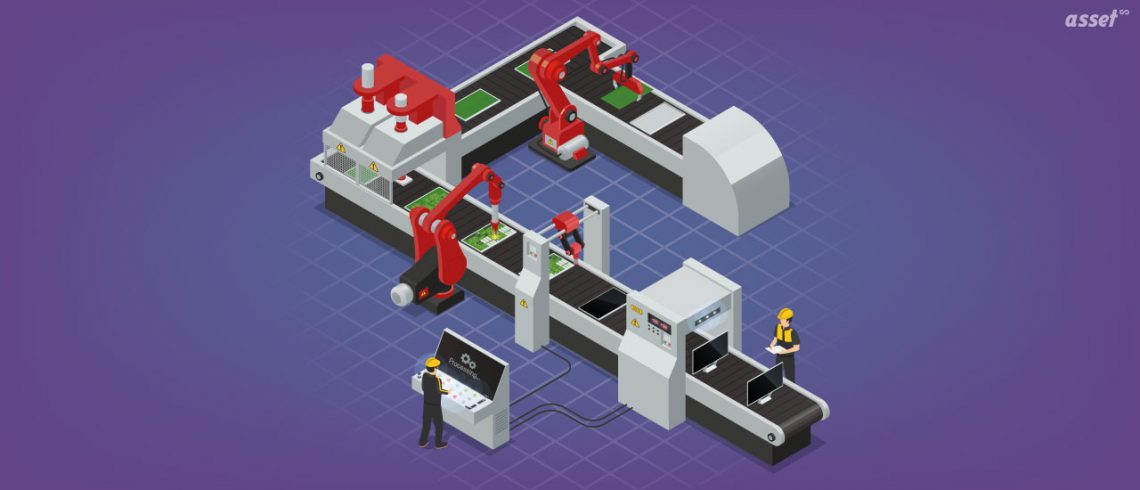The asset availability statistic is a method for determining how long a given asset may be put to good use. It’s the period when an asset is operational and able to generate income.
Availability, or uptime, is one of the most important metrics since it reveals how efficient our production is. In another definition, asset availability is the likelihood that a given piece of equipment will not go down for any reason.
The uptime of a machine is its reliability, and it is quantified in terms of how long it can run without failing. It may be summed up as the probability of success being directly proportional to the length of time operational assets remain free of both failure and unfavorable effects on performance.
Evaluating Asset Availability
- Potential Time in Production: The whole planned use of the factory’s machinery, less any delays that weren’t caused by the malfunction.
- Time in Production: The Total Functioning Of Machinery
- Time Needed to Repair Equipment: The Duration Of Downtime Caused By Unexpected Breakdowns
Time in production is divided by potential time in production to get the proportion of time an item is really used. You may also consider the uptime and downtime of an asset as a measure of its availability.
- The term “uptime” refers to the amount of time that machinery is operational.
- The period when something is not operational or being fixed is called “downtime.”
Ways to Ensure Consistent Availability and Reliability of Assets
During the procurement cycle, company executives devote a lot of time and energy to making sure they buy the right assets to support the company’s present and future needs.
However, businesses seldom think about the sustainability workload that will be required down the road to keep the asset producing the desired levels of output in terms of efficiency, quality, and performance.
The four main objectives of a well-run business are:
- Making sure expensive hardware and software stay up and running for as long as possible so that it may continue to serve the company’s needs. This is called asset protection.
- Increasing the effectiveness of assets by concentrating on productive assets.
- Lowering the total cost of ownership by striking a balance between immediate expenditures and future requirements.
- Taking preventative measures to improve operational efficiency and effectiveness.
Steps for enhancing Reliability:
- Find out how long you may expect an asset to operate.
- Examine operational records of machinery.
- Act judiciously in light of all the available data.
- Make upkeep a top priority.
- Have enough stock on hand for repairs.
Knowing and calculating the expected lifespan of each asset is crucial for enhancing reliability. The second stage is to gather information on the efficiency and condition of the relevant machinery. The next step is to make a choice based on what you’ve learned.
Find out The cause of Your Asset’s Failure
In the event that your asset fails, you’ll need a way to quantify the severity of the failure. Luckily, this is where a failure analysis comes in; it can help you see any harm, either current or impending, and assess the extent of the loss.
It’s the practice of looking into the specifics of a mishap in order to figure out what went wrong and who or what is to blame. An analogy that comes to mind when thinking about the function of a failure analysis is that of a detective. If done properly and followed through, failure analysis has the potential to save time, money, and lives.
Types of failures you can face
Understanding the nature of the problem is the first step toward fixing it. There are three distinct sorts of failures:
- Mistakes that may have been avoided
This is the worst sort of failure, and it happens when a business owner or its employees fail to do one of three things: adhere to best practices, hire the proper people, or pay close enough attention to the details.
- Unavoidable failures
These occur seldom and usually entail a wide variety of unusual circumstances. The goal of preventing this kind of failure is to put in place systems that can detect early warning signs of failure caused by complex factors and allows companies to react before the situation goes out of control.
- Deliberate failures
This is the highest quality available. They occur quickly and don’t need a lot of effort. This sort gives you the greatest bang for your buck in terms of helpful data.

